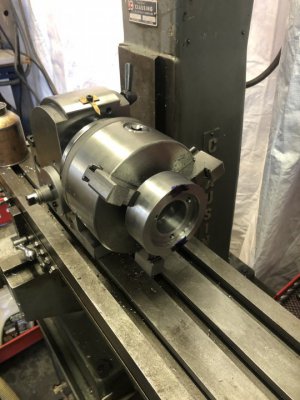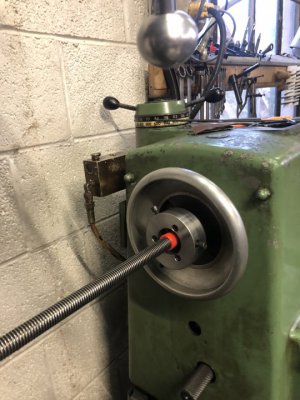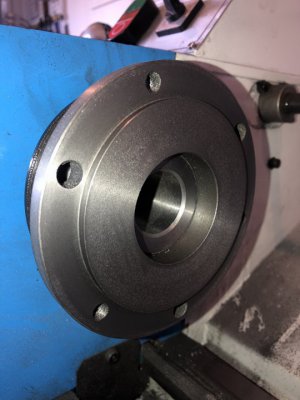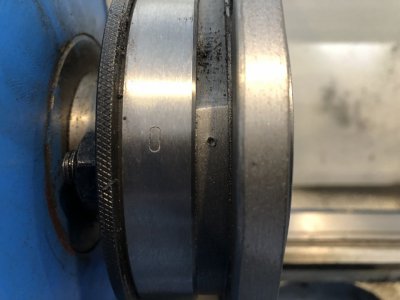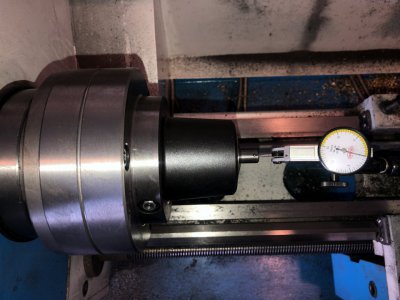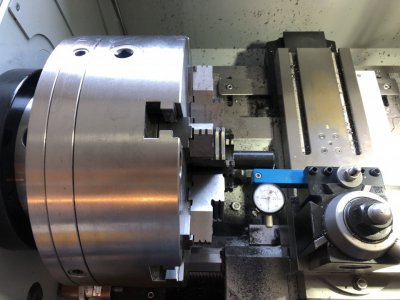POTD was making a couple arbors for a pair of small Jacobs drill chucks. Backstory is I primarily use an E32 collet chuck in my Bridgeport. I lose some head space over an R8 collet, but find it more convenient to loosen the collet nut at chest level than reaching up for the draw bar. And yes, I have a power draw bar planned in the future.
My Bridgeport has 3 drill chucks at the ready, all with ½” diameter arbors. I bought three 0-1/4” Jacobs chucks off eBay for under $20 including shipping with a plan to make 3/8” arbors for two of them. It seems like I’m always starting with a 3/8” collet with a ¼” or 3/8” end mill, then have to switch to a ½” collet to use the drill chucks. The 3/8" arbors would let me drill small holes without swapping collets.
Three Jacobs 1A (0-1/4") chucks off eBay. Just one had a 1/2" straight arbor.
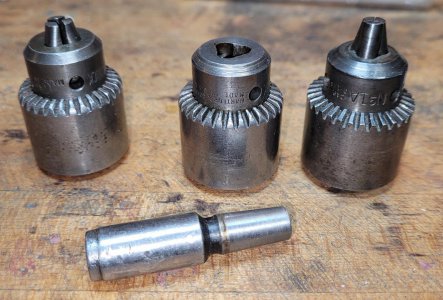
Material of choice was O-1 drill rod. One of the chucks came with a ½” arbor which was used to set up the compound angle for the taper. I started by measuring the large diameter of the taper at 0.385”. Thought about using 0.375” drill rod and live with less engagement to the chuck, but used ½” instead.
Set a caliper to 0.375" and had more arbor setting beyond than I was comfortable with. Went to 1/2" drill rod to hold the large diameter of the taper (0.385"). Plus, turning the taper and shank in the same setup ensured no runout between the two.
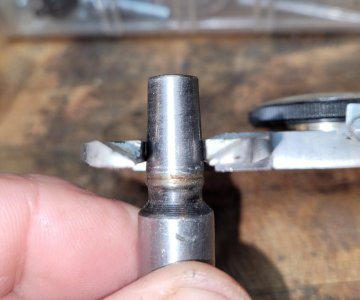
Chucked up the ½” arbor and swept its length with a dial indicator. Loosely tightened the compound screws and tapped with a brass hammer until the indicator stayed at zero through the sweep.
Back and forth with the compound tapping the compound until the indicator didn't change over the sweep
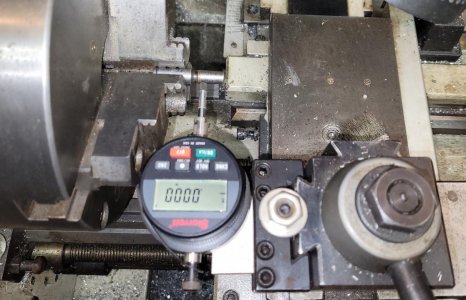
Standard turning from that point. Center drill, turn to a shade over 0.385”, plunge in at the base of the taper to 0.350” (presumably for wedges to remove the chuck from the arbor) and turned the straight shank to 0.375”. Then turned the taper.
Center drill
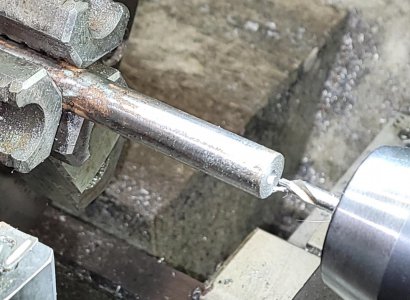
Turn to 0.375" for the shank and a shade over 0.385" for the taper
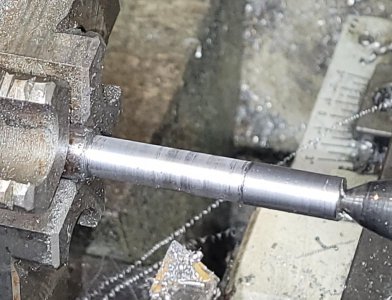
Plunge an area for wedges to remove the chuck
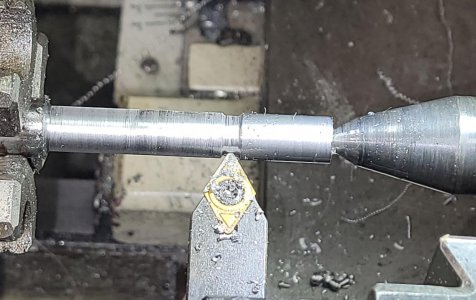
Cutting the taper using the compound
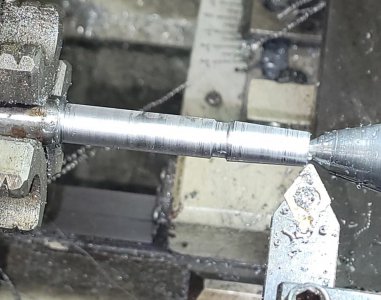
Arbors were polished with 400-grit on the lathe. I was taught to loop the paper over a flat surface like a file when polishing. Not a mirror surface, but pretty smooth.
After polishing up some with 400-grit
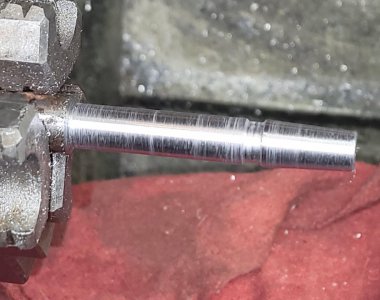
Test fit
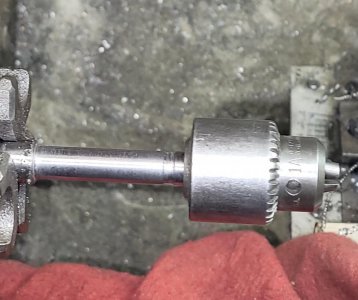
The arbors were hardened in a Thermolyne muffle furnace, polished with a Scotch-brite wheel and tempered to straw color on a Thermolyne hot plate. Should save me a little time from swapping collets.
Taking the arbor up to 1500 F in a heat treat furnace
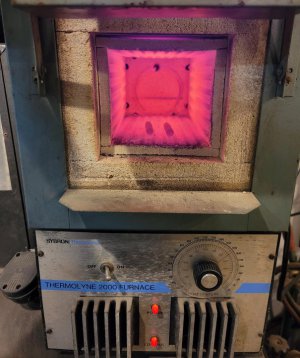
Tempering on a hot plate
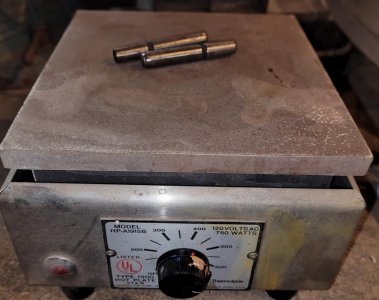
New 3/8" arbors
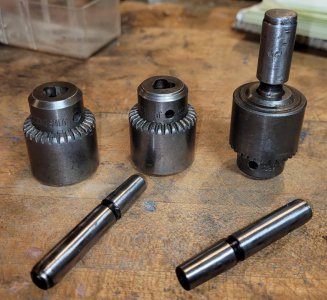
Tapped the arbors home with a brass hammer
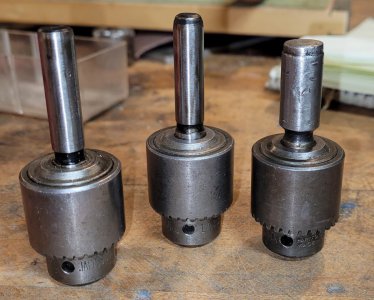
All ready for use with a 3/8" ER32 collet
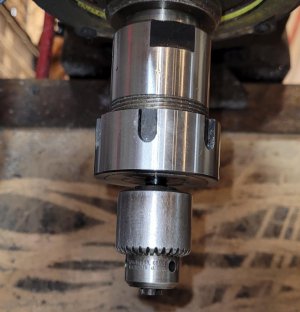
Thanks for looking, Bruce


